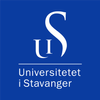1: Introduction
7: Interlude
9: Epilogue
10: References
3 Artistic Research
Artistic Research
I have aimed to do research through art, meaning that my own experience as a guitarist, improvisor and composer has been the focal point in my research.
Artistic research is inseparably linked to artistic development. in the intimacy of experimental studio practice, we can recognize the cycle of learning in action research, where research findings give immediate cause for changes and improvements. (Borgdorff. H. 2011)
Method
The aim of this research has been to develop and evolve as an improvising guitarist. I have used a cyclical method based on Kolb’s Experimental Learning Cycle. This method focuses on the learner’s personal development and perspective. It allows me to apply knowledge in real life situations, such as concerts and rehearsals.
This cycle consists of preparation, execution/Concrete experience and reflective observation.
In Kolb´s theory, the impetus for the development of new concepts is provided by new experiences. For me, it was crucial to be able to play concerts, solo studio work/recordings, and have workshops/rehearsals with other musicians during the whole project as they were the «new experiences». I applied this cycle in the following way:
1. Preparation. Working with concrete techniques and concepts. (Prepare a new concert or workshop/rehearsal and try to apply the new knowledge.)
2. Execution/Concrete experience. Concert/Rehearsal/Workshop.
3. Reflective Observation of the new experience. Listening to/watching footage of the concert/workshop/rehearsal. What worked and what did not work? What did I like, what did I not like? What can I change? What can I add or delete?
The following quote is from «The Manifesto of Artistic Research -A Defense Against Its Advocates», by Silvia Henke, Dieter Mersch, Thomas Strässle, Jörg Wiesel, Nicolaj van der Meulen. In this section of the text, they talk about method in artistic research:
«…the arts do not proceed according to a strict method (met’hodos) along a predetermined trajectory, but rather in the form of leaps, digressions, and detours which continually generate new and unexpected counter-expressions, and do not set a goal for their nonlinear “experiments,” but instead trigger irritations and thus daring revelations. » Henke S, Mersch D, Strässle T, Wiesel J, Meulen N. 2020)
During my research period, it has been important to me to go where the research took me. The project evolved as my knowledge grew. The process of reflecting over artistic results has given me a deeper understanding of who I am as an artist, as well as a human being.

